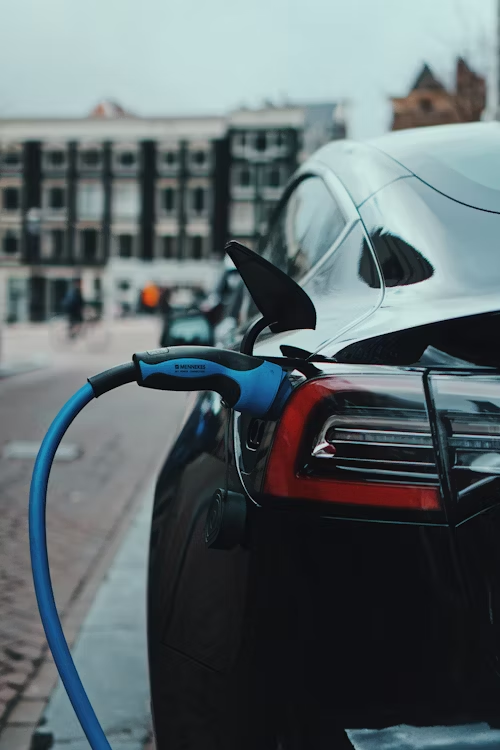The Rise of Smart Car Retrofitting: Transforming Your Basic Ride into an Electric Powerhouse

Just as the classic Mazda RX-7 once redefined the sports car landscape with its rotary engine, today's automotive innovations are all about converting your trusty four-wheels into a lean, green, driving machine. Smart car retrofitting isn't just an upgrade; it's a revolution on wheels, combining nostalgia with cutting-edge technology. Imagine that Mazda RX-7, but electric—sounds pretty cool, right?
Understanding Smart Car Retrofitting
Smart car retrofitting involves modifying a vehicle, typically an older model like the iconic Mazda RX-7, to incorporate advanced features such as electric drivetrains, enhanced battery systems, and smart technology integrations. This process not only breathes new life into vintage models but also aligns them with modern standards of efficiency and technology.
Why Retrofit Your Car?
Retrofitting your vehicle serves multiple purposes. It reduces environmental impact, decreases fuel costs, and often enhances the driving experience with new technology. It’s a sustainable option for car enthusiasts looking to keep their beloved vehicles road-worthy and eco-friendly.
Components of a Smart Retrofit
Key components in smart car retrofitting include the electric motor, battery pack, and the vehicle’s user interface. These elements transform the traditional combustion engine into an electric powerhouse. With advancements in technology, these components are more accessible and effective than ever.
Core Components of Electric Vehicle Upgrades
- Electric Motor Installation
- High-Capacity Battery System
- Regenerative Braking System
- Advanced Driver-Assistance Systems (ADAS)
- Integrated Smart Infotainment System
Each component is crucial for ensuring that your retrofitted vehicle performs optimally and is compatible with modern electric vehicle (EV) infrastructure.
Choosing the Right Electric Car Specialist
Just as you wouldn’t trust just anyone with your classic Mazda RX-7, selecting the right specialist for your electric car conversion is critical. These experts not only have the technical know-how but also understand the nuances of different vehicle models and how to best integrate new technologies.
What to Look for in a Specialist
An ideal specialist should have a robust portfolio of successfully converted vehicles, strong testimonials from previous clients, and an in-depth understanding of both older vehicles and modern electric systems.
Evaluating Expertise through Certifications and Experience
Look for certifications in electrical systems, automotive engineering, and other relevant fields. Experience, especially with vehicles similar to your own, can be a significant advantage.
Criteria for Choosing an Electric Car Specialist
- Certifications and professional training
- Experience with specific vehicle models
- Positive customer reviews
- Transparency in pricing and processes
- Post-upgrade support and warranty
Choosing the right specialist ensures that your retrofit will be handled professionally and that the end product will be both reliable and exciting, much like when the Mazda RX-7 hit the streets with its groundbreaking features.
Steps in the Smart Retrofitting Process
Initial Assessment and Planning
The first step involves a thorough assessment of your vehicle's current condition and a discussion of your vision. Here, the specialist will outline what’s possible and what might be a challenge.
Detailed Conversion Strategy
Once the assessment is complete, a detailed plan is made. This includes timelines, costs, and a step-by-step breakdown of the conversion process.
Key Steps in Electric Vehicle Conversion
- Detailed assessment of the existing vehicle
- Selection of appropriate electric motor and battery
- Integration of the electric system with the vehicle’s chassis
- Installation of smart technology features
- Final testing and quality control
Each step is crucial to ensure that the retrofit is successful and that the vehicle will perform well under all conditions.
Benefits of Electric Car Upgrades
Beyond the obvious environmental benefits and cost savings on fuel, upgrading to an electric vehicle offers a significantly improved driving experience. Enhanced torque, lower maintenance costs, and access to smart car features such as real-time diagnostics and mobile connectivity are just the tip of the iceberg.
Enhanced Driving Experience
The instant torque and quiet operation of electric motors transform the driving experience, making it smoother and more enjoyable.
Reduced Environmental Impact
Electric vehicles produce zero emissions at the point of use, which significantly decreases your environmental footprint.
Advantages of Smart Car Upgrades
- Increased vehicle lifespan
- Higher resale value
- Eligibility for tax credits and incentives
- Reduced carbon footprint
With these benefits, it’s clear that smart car retrofitting is not just a passing trend but a glimpse into the future of personal transportation.
Final Thoughts
Like the Mazda RX-7, which stood out for its unique engineering, smart car retrofitting represents a blend of nostalgia with modern innovation. It’s an exciting time for car enthusiasts and environmental advocates alike. Whether you’re looking to breathe new life into a classic or simply aiming for a more sustainable ride, smart car retrofitting is a thrilling and responsible path forward.
Tags: Smart car retrofitting, Electric vehicle upgrades, Electric car specialists, Smart vehicle conversions, Smart car upgrades


